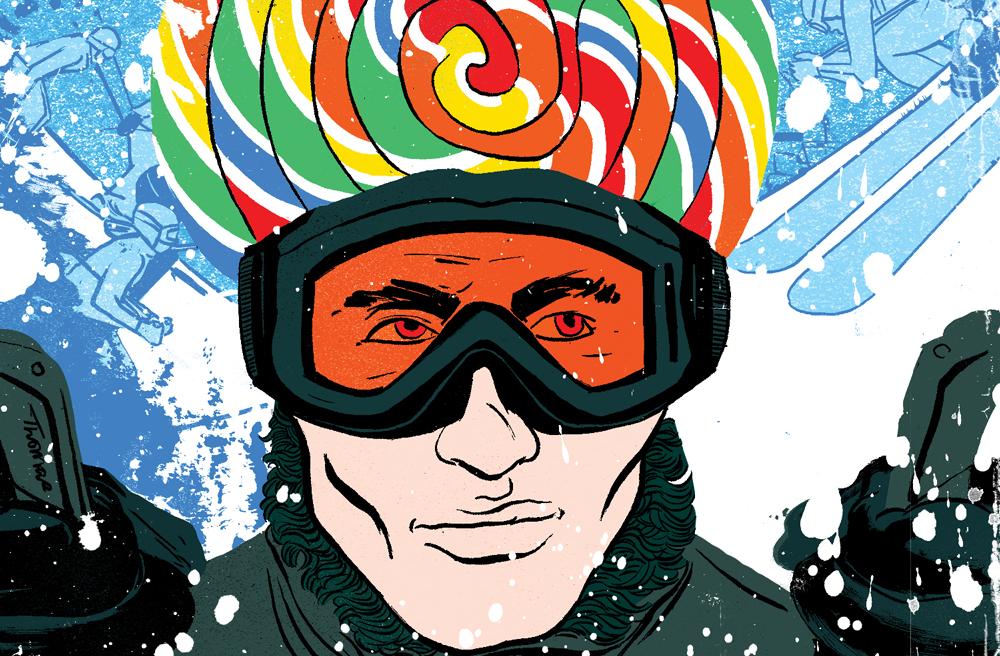The Local newsletter is your free, daily guide to life in Colorado. For locals, by locals.
When I hear a fellow skier tell the story of someone else’s snowboard sliding to a hockey stop against his skull, I cringe—and then file it away in my arsenal of persuasive tactics. It’ll come in handy for the argument that starts every year when the first flakes fall, as inevitable and frustrating as I-70 ski traffic: “Why don’t you wear a helmet?” I ask my boyfriend, Ted. “Meh,” he says. “I don’t like helmets.”
The excuses keep coming as the season wears on. Statistics don’t work (“Ninety thousand snow-sports head injuries happen every year!”), and peer pressure doesn’t get through (“Look around—everyone else is wearing one!”). Ted is certainly smart enough to know better, but he won’t budge.
Me, on the other hand? I’m the girl dousing herself in SPF on cloudy days and buckling up to drive across a parking lot. Risk-taking isn’t my thing. So this winter (as I’m learning to ski myself), I set out to prove to Ted that a helmet is a good idea. After all, I have both common sense and medical science on my side. And, it turns out, the clout of Aspen Skiing Co.: Earlier this season, the snow-sports giant mandated that all of its employees wear helmets on the slopes—even on the bunny hill.
“Helmets are too bulky,” Ted tells me as we’re working through technique on Beaver Creek’s green runs. Sure, the polycarbonate bubble I’m wearing won’t ever feel as airy as a cute knit beanie. But staving off a concussion or worse seems well worth the tradeoff. “You’re just starting—a helmet is fine for you,” Ted says the next time out on the groomers at Steamboat, “but I’m a great skier.” He flashes a cocky smile. I smile back sweetly. “Isn’t that like arguing you don’t need a seatbelt because you’re a great driver?”
I’m mustering the courage to try the blues at Arapahoe Basin when Ted hits me with the latest justification: “I ski too fast for a helmet to matter.” This sounds ludicrous to me on the chairlift. But when we get home, I learn that he has a point: According to the American Academy of Orthopaedic Surgeons, if you’re skiing fast enough to die in a collision, a helmet probably won’t save you. In fact, its protective abilities start dropping when you hit about 15 mph. OK, fine, a giant spruce will always have the advantage in a skier versus tree contest. But the hard hat can certainly reduce the severity of the damage. “We’re talking about your brain here,” I tell him. “Isn’t that worth protecting?”
Not until we’re making turns in the spring corn at Vail do we get to the bottom of Ted’s reluctance. “My dad called kids who wore helmets ‘lollipop heads’ when I was little, OK?” he confesses. “How am I supposed to wear one after that?” Ohhhhh. I may be no match for his deep-seated daddy issues, but he finally agrees to buckle on a rented helmet during a backcountry outing at Jones Pass near Winter Park. He later tells me that he didn’t wear it at first, but he’d gone with a pack of experienced skiers whose skills he admires—and every single one pulled on a helmet. “First time in my life I’ve ever felt like a loser for not wearing one,” Ted says afterward. He ended up putting it on.
The verdict: “It was all right.” (Insert grumbling here.) He agrees to pick up a sleek new model and wear it on his family’s trip to Wolf Creek—this, despite a guaranteed lollipop-head ribbing from Dad. I’m calling that a win.
The stats behind snowsports-related head injuries:









